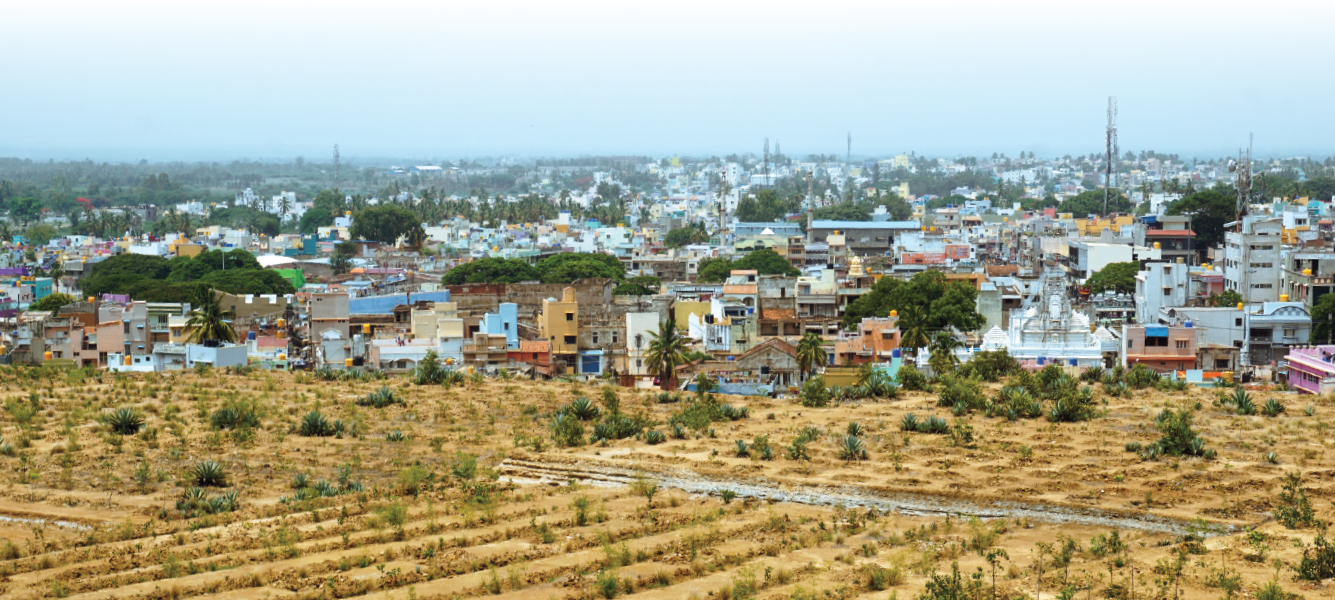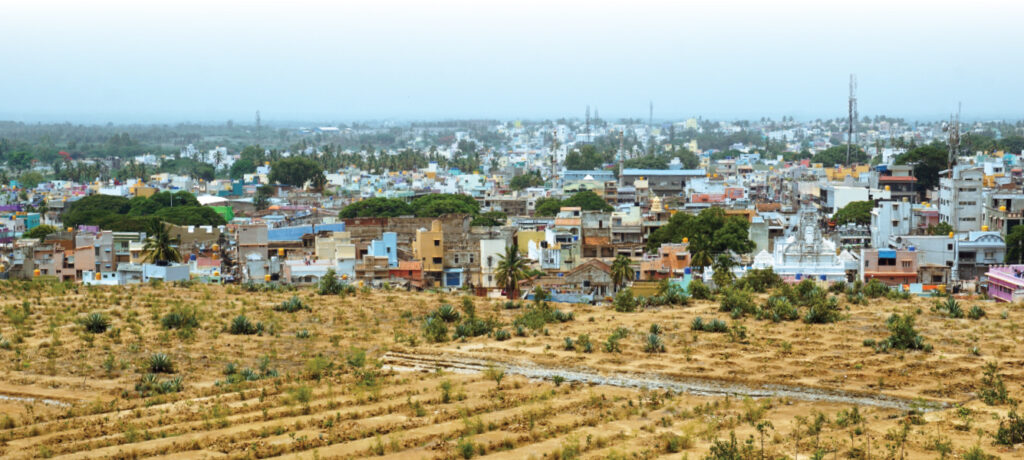
A first-timer to the Kolar Gold Fields (KGF), 100 km to the east of Bengaluru, can easily be deceived by the grandeur of the whole scene — a series of hillocks made of mud, rock, slime and chemicals, notably cyanide — as it creates the illusion of natural formations. Which they are not. These 15-odd cyanide dumps rising over 200–250 ft high in the heart of KGF at Bangarapet taluk of Kolar district are slurry deposits, which over the decades have taken a heavy toll on the lives of the locals.
After the rocks with layers of gold strips were dug out, they were crushed to powder at the crusher houses and a mix of chemicals with cyanide was added to it to separate gold from other minerals. The resultant slime residue — the powdered rock with water — is then deposited as slurry waste in large dumps across the underground mines since the 1880s. This has now taken the shape of toxic hillocks. Enter RC Bangalore Orchards, RID 3190, in August 2017, and within two years of their green drive, “the largest dump has seen a drastic reduction in the emission of cyanide dust which the air carries to wreak havoc in our lives, causing irreparable damage to our health through respiratory illness, eye irritation and skin diseases,” says
N Ramakrishna, a member of RC Kolar Gold Fields.
One of the architects behind the greening of cyanide dump project, Neil Michael Joseph, Chairman, Hasiru (green in Kannada) Committee of RC Bangalore Orchards, was not disappointed when “a lab official in Kolar town dismissed outright the possibility of growing trees (or any sort of vegetation, for that matter) on the toxic mound.” He said that the “soil sample did not support the growth of anything and hence, was not conducive for any vegetation. But we did not lose hope,” says Joseph.
It was the then Deputy Conservator of Forests Srinivasa Rao, Karnataka, who came out with the innovation of ‘interlocked trenches’ on the soil which led the rainwater to percolate down, allowing the surface to retain moisture, thus cooling the air system. “His path-breaking idea led us to take up plantation on the slurry dump and soon, the fine cyanide dust was arrested by the green cover, instead of being blown away causing health problems to the KGF residents,” says D Ravishankar, former president, RC Bangalore Orchards.
Now that Rotary has adopted this cyanide dump, spread over 40 hectares, the residents are relieved, because “in windy times (July-August), the cyanide air used to waft across from the dumps in such great force that even breathing was a difficulty,” recalls Ramakrishna. Many families were affected by asthma, lung infection and silicosis and “we had to shell out huge amounts for our medical bills.”
Residents used to wear face masks three years ago to “protect us from the harmful effect of the cyanide-mixed air. With Rotarians growing trees on the dump, there is nearly 90 per cent change in the air composition. Before this green project, cyanide air has claimed many lives as poor families can’t afford treatment,” said P Magendran, a casual employee at a local corporate.
Scientific plantations
Over 14,000 trenches, 55,000 saplings, three lakh seed balls and 700 tonnes of compost manure transported from Bengaluru, have all gone into the afforestation project on the cyanide dump in the last two years. While trees such as pongamia, mahogany, bamboo, rakthachandana, peepul, neem, Singapore cherry, rain tree and gulmohar line up the trenches, forest grass fills up rest of the space. On the trench mound, cactus and shrubs that need little moisture were lined up to complete the three-layered protective shield against the rise of the cyanide dust.

While the club has contributed ₹30 lakh, and had managed the logistics and transportation cost, “the Forest Department has provided the labour, seedlings and the machinery to execute the plantations on top of the dumpsite,” says Joseph. His company, Baghirathi Travels, is an active partner in the afforestation drive which benefitted around 1.65 lakh residents of KGF.
A British-era school revamped
A hardcore Rotarian and a cricket buff, Joseph turns nostalgic with fond memories as we entered the BGML English Higher Primary School (Parkinson Memorial School) situated in Kolar Town. The picturesque school also accommodates a high school (Lindsay Memorial).
“I am an alumnus of this school which our club adopted in 2007 and since then, we have rebuilt a toilet block (gender-segregated) through a global grant, planted trees, gave sports equipment, dual desks and relayed the tiles of the classrooms.” Ramesh Chari, a member, has sponsored the tiles.
Another big project was rebuilding the Central Hall, which had almost collapsed. “We rebuilt it in 2008–09 in partnership with KGF Schools Foundation, an alumni group, at a cost of ₹45 lakh,” says Joseph. Apart from this, the club has spent ₹15 lakh on other reconstructions at the school.
Pictures by V Muthukumaran






